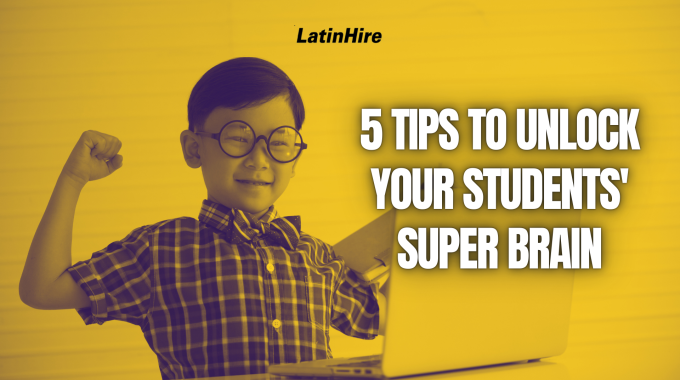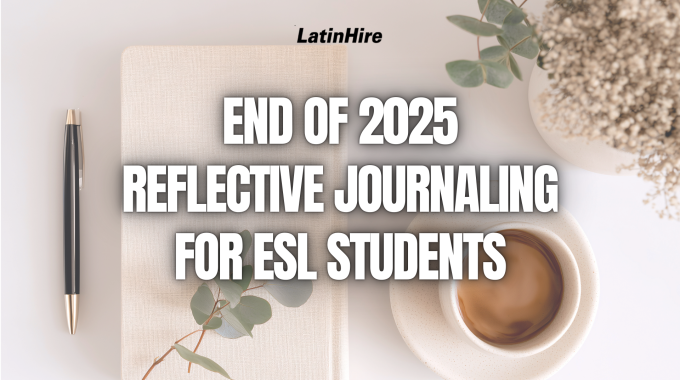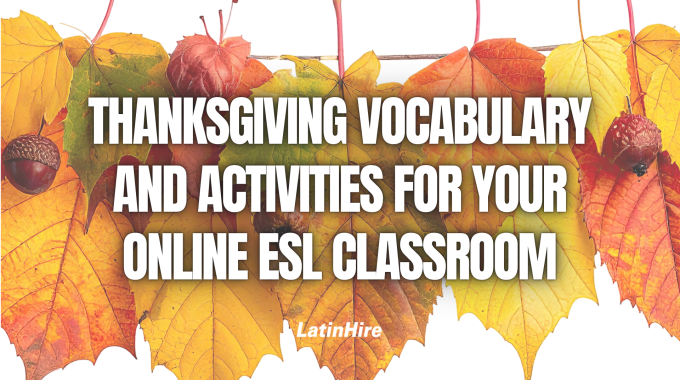As 2025 comes to a close, December offers the perfect opportunity to slow down, reflect…

5 Tips to Unlock Your Students’ Super Brain
As online educators, one of the most powerful things we can do is teach our students how to learn, not just what to learn. Whether you’re teaching English, science, math, or any other subject, helping students unlock their super brain means giving them the tools to learn more effectively, retain more information, and approach their learning with greater confidence and clarity.
In today’s article, we’ll explore research-based strategies and simple hacks you can use to help your students tap into their full cognitive potential.
1) Teach Students Different Ways to Learn

Most students aren’t explicitly taught how to learn, they’re just given information to memorize for a test. Unfortunately, some students believe that they’re not smart simply because they can’t remember and regurgitate information perfectly. Help your students understand that learning is a skill that can be trained. You can start by introducing these learning methods:
- Active recall: Instead of re-reading notes, have students close their books and try to recall key ideas. You can integrate mini quizzes or ask “what did we just learn?” every 10-15 minutes and have students summarize the information in their own words.
- Spaced repetition: Encourage students to review information over increasing intervals (e.g. Day 1, Day 3, Day 7). You can use digital tools like Anki or Quizlet to automate this.
- Interleaving: Mix different types of problems or topics in one session instead of focusing on just one. This approach strengthens connections between concepts.
2) Notetaking Hacks that Help Retention
Not all note-taking styles are equally effective. Encourage students to shift from passive transcription to meaningful notetaking. Ask them to try these methods if their current note-taking strategy isn’t working:
- Cornell Method: Divide the page into three sections: keywords, notes, and summary. This encourages students to think critically about what they’re learning.
- Mind maps: Great for visual learners, mind maps help students make connections between different concepts.
- Digital tools: Tools like Notion or Microsoft OneNote allow students to organize, search, and revisit their notes easily.
3) Boosting Memory with Simple Techniques

Memory is a muscle, and like any muscle, it improves with the right training. Share these memory-boosting techniques with your students:
- Mnemonics: Use acronyms, rhymes, or funny associations to help recall lists or processes.
- The Method of Loci (Memory Palace): Link ideas to physical locations in a familiar place. This is especially effective for presentations or long lists. For example, you can associate different pieces of information with different parts of your body.
- Visualization: Turn abstract ideas into vivid mental images. The more ridiculous or emotional the image, the better it sticks.
4) Brain Food, Sleep, and Stress Management Matter
Remind your students that the brain isn’t separate from the body, it’s the integral control center of it. Our life choices directly affect the development of our brain, thus our ability to learn. Here are some important brain care aspects to consider:
- Nutrition: Encourage students to eat foods that are good for their brain, like blueberries, avocado, eggs, walnuts, and fatty fish. Also, don’t forget to stay hydrated.
- Sleep: Lack of sleep disrupts concentration, memory, and motivation. Share the importance of getting at least 7-8 hours of sleep every night and create an environment to induce high-quality sleep.
- Stress management: Chronic stress shrinks the hippocampus (key area of the brain for memory). Promote simple daily habits like deep breathing, journaling, or short walks between study sessions.
5) Reading Smarter, Not Just Harder

Online learners often rely heavily on reading, so help them become more efficient readers by offering the following strategies:
- Pre-reading: Skim headings, bold words, and summaries before diving into the text.
- Chunking: Train students to group information into meaningful sections, instead of reading word by word.
- Active reading: Encourage them to ask questions while they read, annotate the text, and summarize each section in their own words.
- Speed reading tools: Introduce tools like Spritz or Readsy to improve reading pace over time.
Are you ready to try these strategies in your next class? Pick one or two and introduce them this week. What other strategies do you know can help students become better learners? Share them in the comments below!



